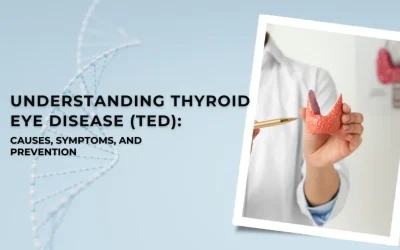Common Eye Disorders and How to Prevent Them

Introduction
The human eyes are remarkable organs that play a vital role in our daily lives. However, just like any other essential part of our body, they are susceptible to certain disorders that can affect vision and overall eye health. In this article, we will explore common eye disorders, their causes, how to recognise them, and most importantly, how to prevent them.
1. Understanding Common Eye Disorders
1.1 Definition of common eye disorders
Common eye disorders refer to a wide range of conditions that affect the eyes, including both refractive errors and eye diseases. Refractive errors belonging to categories such as nearsightedness, farsightedness, and astigmatism result in blurred vision. Eye diseases, on the other hand, encompass various disorders such as horrific cataracts, glaucoma, macular degeneration, and diabetic retinopathy.
1.2 Types of Common Eye Disorders
There are several types of common eye disorders, each with its own classified set of symptoms and treatment options. Some of the most prevalent ones include:
- Nearsightedness (myopia): Difficulty seeing distant objects clearly.

- Farsightedness (hyperopia): Difficulty seeing nearby objects clearly.

- Astigmatism: Blurred or distorted vision at near or far distance.

- Cataracts: Clouding of the eye’s natural lens.
- Glaucoma: Rupturing or damage of the optic nerve, often caused by increased intraocular pressure.
- Macular degeneration: Deterioration of the macula, leading to central vision loss.
- Diabetic retinopathy: Rupturing or damage to the blood vessels in the retina due to diabetes.
2. Causes of Common Eye Disorders
2.1 Genetic factors
In some cases, common eye disorders can be inherited from one’s parents. If there is a family hereditary history of a particular eye condition, the likelihood of developing it increases. Genetic factors can influence the shape and size of the eye, as well as the functioning of the optic nerve and other essential eye structures.
2.2 Environmental factors
Environmental factors, such as exposure to harmful UV radiation for extended periods of time, excessive screen time, and poor air quality, can contribute to the development of common eye disorders. These factors can increase the risk of conditions like cataracts and macular degeneration.
2.3 Lifestyle factors
Certain lifestyle choices can also impact eye health. Smoking, for instance, has been linked to an increased risk of developing cataracts and age-related macular degeneration. Poor nutrition, lack of physical activity, and inadequate eye protection during activities that pose a risk of eye injury can also contribute to the development of common eye disorders.
3. Recognising Common Eye Disorders
3.1 Symptoms of common eye disorders
Recognizing the symptoms of common eye disorders is crucial for early detection and prompt treatment. Some common symptoms include:
- Blurred or distorted vision
- Difficulty seeing objects up close or far away
- Eye redness or irritation
- Sensitivity to light
- Double vision
- Eye pain or discomfort
- Dry or watery eyes
- Gradual loss of vision
It’s important to note that symptoms may vary depending on the specific eye disorder.
3.2 Diagnostic tests for common eye disorders
If you experience any persistent or concerning eye symptoms, it’s advisable to consult an eye care professional. They can perform various diagnostic tests to assess your eye health and identify any underlying disorders. These tests may include:
- Visual acuity test: Measures your quintessential ability to see and identify letters or numbers on an eye chart.
- Refraction test: Determines the appropriate prescription for corrective lenses by measuring the eyes’ ability to focus.
- Slit-lamp examination: Uses a specialized microscope to examine the basic structures of the eye, consisting of the cornea, iris, and lens.
- Intraocular pressure measurement: Checks the pressure inside the eye, which is crucial for detecting glaucoma.
- Retinal examination: Evaluates the health of the retina, blood vessels, and optic nerve using specialized instruments.
4. Prevention of Common Eye Disorders
4.1 Healthy lifestyle habits
Adopting healthy lifestyle habits can significantly reduce the risk of developing common eye disorders. Here are some essential practices to incorporate into your daily routine:
- Maintain a healthy, balanced diet rich in fruits, vegetables, and omega-3 fatty acids, which can support overall eye health.
- Stay hydrated to keep your eyes moisturized and reduce the risk of dryness.
- Protect your eyes from harmful, damaging UV radiation by adorning sunglasses with UV protection and wide-brimmed hats when outdoors.
- Practice proper eye hygiene, such as avoiding rubbing your eyes excessively and regularly cleaning one’s contact lenses as instructed or directed by your eye care professional.
- Take regular breaks when getting involved in activities that require prolonged focus, such as working on a computer, to reduce eye strain.
4.2 Regular eye examinations
4.3 Eye protection
Protecting your eyes from injuries is crucial in preventing certain common eye disorders. Take the following precautions:
- Wear appropriate eye protection when participating in activities that pose a risk of eye injury, such as sports, construction work, or using power tools.
- Use protective eyewear, such as safety goggles or glasses, when engaging in activities that may cause debris, chemicals, or foreign objects to enter the eyes.
- Ensure a safe environment by removing potential hazards, such as sharp objects or loose wires, that can cause eye injuries.
5. Treatment for Common Eye Disorders
5.1 Medications
Depending on the specific eye disorder, medications may be prescribed to manage symptoms, slow down disease progression, or alleviate discomfort. These can include eye drops, oral medications, or injections and should be used as directed by your eye care professional.
5.2 Surgical interventions
In some cases, surgical interventions may be necessary to treat common eye disorders. Procedures such as cataract surgery, LASIK, or retinal detachment repair can help restore vision and improve the overall health of the eyes. Surgical interventions are typically performed by ophthalmologists who specialize in specific eye conditions.
5.3 Lifestyle modifications
Making certain lifestyle modifications can also complement medical treatments and help manage common eye disorders. These modifications may include:
- Following a prescribed eye care regimen, such as using prescribed eye drops or medications as directed by your eye care professional.
- Adopting healthy habits like quitting smoking, as smoking can worsen certain eye conditions and increase the risk of developing others.
- Implement good hygiene by regularly washing your hands before touching your eyes or applying any eye-related products.
- Managing underlying health conditions effectively, such as diabetes or hypertension, can have a significant impact on eye health.
- Taking breaks and practicing eye exercises when engaging in activities that require prolonged focus to reduce eye strain.
Conclusion
Maintaining good eye health is essential for overall well-being. By understanding common eye disorders and their causes, recognising the symptoms, and implementing preventive measures, you can take significant steps towards preserving your vision and minimising the risk of developing eye-related problems. Remember to prioritise regular eye examinations and consult with your eye care professional for personalised advice and treatment options.
FAQs
- What are the most common eye disorders?
- The most common eye disorders include nearsightedness, farsightedness, astigmatism, cataracts, glaucoma, macular degeneration, and diabetic retinopathy.
- Can common eye disorders be hereditary?
- Yes, some common eye disorders can be hereditary. If there is a family history of a particular eye condition, the risk of developing it may increase.
- How often should I get my eyes checked?
- It is generally recommended to have a comprehensive eye exam every 1 to 2 years or as advised by your best ophthalmologist in Hyderabad.
- Are there any natural remedies for common eye disorders?
- While natural remedies may help alleviate certain symptoms, it’s important to consult with your eye care professional from Global Eye Hospital in Kukatpally for appropriate diagnosis and treatment. They can provide guidance on any complementary or alternative options.
- Is it possible to prevent common eye disorders completely?
While complete prevention may not be guaranteed, adopting healthy lifestyle habits, protecting your eyes, and having regular eye exams conducted by eye specialists in Hyderabad can significantly reduce the risk of developing common eye disorders.


